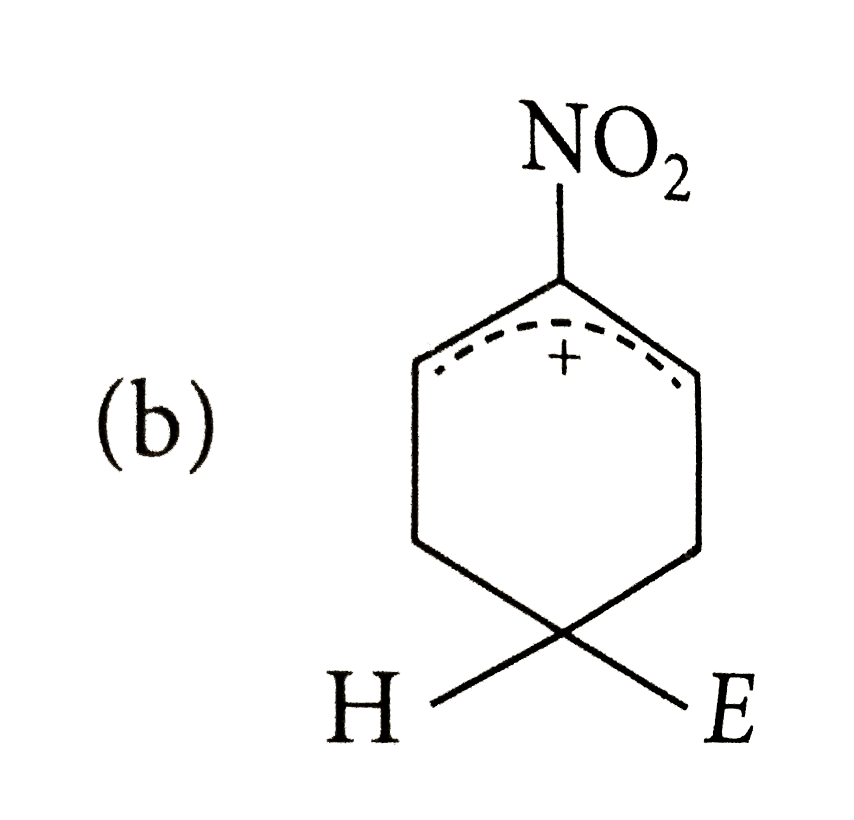Those groups which activate the benzene ring are generally
o-directing
p-directing
o-and m-directing
o-and p-directing.
The correct Answer is:D
To solve the question regarding which groups activate the benzene ring, we need to analyze the effects of different substituents on the electron density of the benzene ring. Here’s a step-by-step breakdown:
Step 1: Understand the Concept of Activation and Deactivation
- Activation refers to the ability of a substituent to increase the electron density on the benzene ring, making it more reactive towards electrophiles.
- Deactivation refers to the ability of a substituent to decrease the electron density on the benzene ring, making it less reactive towards electrophiles.
Hint: Remember that activating groups increase electron density, while deactivating groups decrease it.
Step 2: Identify Electron Donating and Electron Withdrawing Groups
- Electron Donating Groups (EDGs): These groups donate electron density to the benzene ring, often through resonance. Examples include -OH, -OCH3, -NH2, and alkyl groups.
- Electron Withdrawing Groups (EWGs): These groups withdraw electron density from the benzene ring, often through resonance or inductive effects. Examples include -NO2, -CN, -COOH, and halogens like -Cl.
Hint: Classify the groups based on whether they donate or withdraw electrons.
Step 3: Analyze the Directing Effects of Substituents
- Ortho and Para Directing Groups: EDGs typically direct incoming electrophiles to the ortho and para positions relative to themselves because they increase electron density at these positions.
- Meta Directing Groups: EWGs direct incoming electrophiles to the meta position because they decrease electron density at the ortho and para positions.
Hint: Consider where the electron density increases or decreases when substituents are attached.
Step 4: Conclusion on Activation
- Since the question asks about groups that activate the benzene ring, we focus on EDGs that are ortho and para directing.
- Therefore, the correct answer is that groups which activate the benzene ring are generally ortho and para directing.
Hint: Look for groups that increase electron density at the ortho and para positions.
Final Answer
The groups which activate the benzene ring are generally ortho and para directing (Option D).
- Activation refers to the ability of a substituent to increase the electron density on the benzene ring, making it more reactive towards electrophiles.
- Deactivation refers to the ability of a substituent to decrease the electron density on the benzene ring, making it less reactive towards electrophiles.
- Electron Donating Groups (EDGs): These groups donate electron density to the benzene ring, often through resonance. Examples include -OH, -OCH3, -NH2, and alkyl groups.
- Electron Withdrawing Groups (EWGs): These groups withdraw electron density from the benzene ring, often through resonance or inductive effects. Examples include -NO2, -CN, -COOH, and halogens like -Cl.
- Ortho and Para Directing Groups: EDGs typically direct incoming electrophiles to the ortho and para positions relative to themselves because they increase electron density at these positions.
- Meta Directing Groups: EWGs direct incoming electrophiles to the meta position because they decrease electron density at the ortho and para positions.
- Since the question asks about groups that activate the benzene ring, we focus on EDGs that are ortho and para directing.
- Therefore, the correct answer is that groups which activate the benzene ring are generally ortho and para directing.
The groups which activate the benzene ring are generally ortho and para directing (Option D).
Topper's Solved these Questions
- HYDROCARBONSBOOK - AAKASH INSTITUTE ENGLISHCHAPTER - HYDROCARBONSEXERCISE - SECTION-B OBJECTIVE TYPE QUESTIONS (ONE OPTION IS CORRECT)
25 Videos
- HYDROCARBONSBOOK - AAKASH INSTITUTE ENGLISHCHAPTER - HYDROCARBONSEXERCISE - SECTION-C OBJECTIVE TYPE QUESTIONS (MORE THAN ONE OPTIONS ARE CORRECT)
12 Videos
- HYDROCARBONSBOOK - AAKASH INSTITUTE ENGLISHCHAPTER - HYDROCARBONSEXERCISE - ADDITIONAL INFORMATION
3 Videos
- HALOALKANES AND HALOARENES BOOK - AAKASH INSTITUTE ENGLISHCHAPTER - HALOALKANES AND HALOARENES EXERCISE - ASSIGNMENT SECTION -D
15 Videos
- HYDROGENBOOK - AAKASH INSTITUTE ENGLISHCHAPTER - HYDROGENEXERCISE - ASSIGNMENT (SECTION - D) (Assertion-Reason Type question)
15 Videos
Similar Questions
Out of -OH and −NO2 groups, which deactivates the benzene ring and why?
View SolutionExplain the fact that in aryl ethers, (i) the alkoxy group activates the benzene ring towards electrophilic substitution and (ii) it directs the incoming substituents to ortho and para positions in benzene ring.
View Solution
Knowledge Check
The electrophile, E+ attacks the benzene ring to generate the intermediate σ-complex. Which σ-complex is of lowest energy?
A B
B C
C D
D
Which of the following groups is o-p directing but deactivates benzene ring for electrophilic substitution?
A−CH3B−NH2C−ClD−NO2Presence of a nitro group in a benzene ring
Aactivates the ring towards electrophilic substitutionBrenders the ring basicCdeactivates the ring towards nucleophilic substitutionDdeactivates the ring towards electrophilic substitution.
The group which is most activating is
View SolutionThe chemical reactions in which the reactants require high amount of activation energy are generally
View SolutionPredict the nature of the M−effect when 'Cl' and 'NO2' groups are attached to the benzene ring. Write the different resonating structures.
View SolutionIn which of the following, the group attached to the benzene ring shows +R effect
View SolutionNitration is an example of aromatic electrophilic substitution and its rate depends upon the group already present in the benzene ring. Out of benzene and phenol, which one is more easily nitrated and why ?
View Solution
